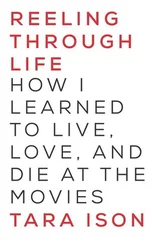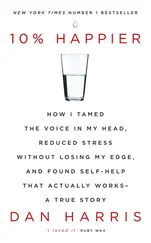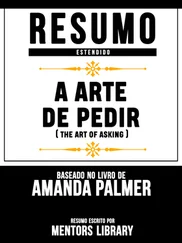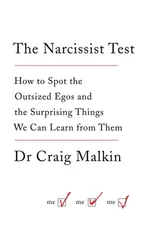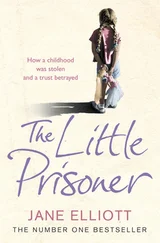Don’t get me wrong: I wasn’t lazy. I wanted to work . But I had no desire to get a JOB job.
Growing up as an über-emotional teenage songwriter and theater nerd, I faced a bewildering and bottomless chasm between what I wanted to become— a Real Artist —and how one actually, well… becomed it. Though I worshipped daily at the altar of MTV, I didn’t know any famous musicians, so I couldn’t ask them how they had becomed. I didn’t even know any non-famous musicians. All the adults I’d ever encountered—my parents, my friends’ parents—all had “grown-up” jobs: mysterious, complicated, white-collar jobs, jobs in tall buildings, jobs that involved computers, jobs about which I understood absolutely nothing and in which I had no interest.
When people asked me What I Wanted To Be When I Grew Up, I’d lie and try to just give them the most impressive answer I could think of: A lawyer! A doctor! An architect! An astronaut! A veterinarian! (I liked my cat. I figured I qualified.)
The truth just sounded too stupid. I wanted to be a Rock Star. Not a pop star. A ROCK STAR. An artistic one, a cool one. Like Prince. Like Janis Joplin. Like Patti Smith. Like the dudes in The Cure. The ones who looked like they Lived Their Art. I loved playing the piano, I loved writing songs, and I knew that if I had any choice in the matter, THAT’S the job I wanted.
But I had no clue how anybody got such a job, or what being a wage-earning artist meant in practical terms. I’d barely caught a glimpse of a working artist in his or her natural habitat until I attended my first rock concert at the age of eleven and saw that Cyndi Lauper was a real person. Until that moment, I had been suspicious that Cyndi Lauper, Prince, and Madonna were, in fact, being convincingly played by actors.
Furthermore, the liberal arts education that my parents had generously broken their backs to be able to afford, because they considered it a crucial necessity for “survival in the real world,” had done a shocking amount of nothing to prepare me for the cold truth of my chosen career path.
Not that college was all impractical theory or wasted time, and I harbor no regrets. I learned how to hand-develop my own film in a darkroom. I learned the basics of theatrical lighting design. I studied Chaucer, John Cage, postmodern performance art, post-WWII German experimental filmmakers and Post-Apocalyptic/Eschatological Beliefs Throughout A Variety Of World Religions And Fictional Genres. I even learned—not in the classroom, of course—how to construct a potato cannon that could shoot as far as 250 feet (the distance to the rival dorm across the street) using a long piece of PVC piping, and a bottle of Aqua Net extra-hold hairspray. (And a potato.)
I also learned over those four years that a diet of hummus, cookies, and cereal makes you fat, that it’s impossible to tap a keg unless it’s been properly chilled, and that DJ-ing a college radio show from three to five in the morning doesn’t expand your social circle one iota. And that heroin kills people.
But I did not learn how to be a rock star, or, for that matter, an employable, wage-earning bohemian; Wesleyan University did not offer any practical courses in that department. And there didn’t seem to be anybody hanging around that I could ask.
Now I was done, I had the degree, I’d made my family happy. And after enrolling, panicking, and quickly withdrawing from a full-ride scholarship to get my master’s degree in “anything I wanted” at Heidelberg University (I’d figured out, by that point, that academia was making me miserable, and drunk), I flew home to Boston from Germany with two giant suitcases and no real plan about how to Start My Real Life.
I considered my situation:
I knew I wanted to be a musician.
I knew I didn’t want a Real Job.
I knew I had pay for food and a place to live.
I took a barista job, rented a room in a dilapidated share house in Somerville, Massachusetts, and decided I’d be a statue.
• • •
Toscanini’s Ice Cream, where I worked as a sorbet-scooping espresso puller along with a motley bunch of twentysomethings, was a local operation with three Cambridge locations owned and lovingly managed by an incredible guy named Gus Rancatore. A humble press quote permanently etched into the front window of the store read:
“THE BEST ICE CREAM IN THE WORLD”—THE NEW YORK TIMES.
The baristas were assured four shifts a week at $9.50 an hour plus tips, which was enough to live on, and everyone who worked there ate a lot of ice cream, which was free to the employees.
My expenses included rent ($350 a month), food other than ice cream (I could survive on about $100 a month), and the extras: cigarettes, beer, records, bike repairs, and occasionally, clothes. I’d never had expensive taste and bought most of my wardrobe at the dollar-a-pound section of a used clothing store in Cambridge called The Garment District, which is where I found The Dress.
Building the statue was easy: I poked around the vintage shops trying to spot an inspiring, long-sleeved, high-necked, monochromatic costume fit for a statue, and found an antique bridal gown that fit the bill and cost only $29. PERFECT , I thought. I’d be a bride . All white. Easy. Sorrowful. Mysterious. Coy. Compelling . WISTFUL! How could anyone hate a bride?
I also bought some white face paint, a full-length lace veil, and a pair of long, white opera gloves. Then I went to the wig shop and completed my ensemble with a black Bettie-Page-style bob. I bought a glass vase from a thrift shop and spray-painted it white on the sidewalk outside of my apartment.
I started the next day.
I decided it would be perfect to hand out flowers as little tokens of gratitude, but I didn’t know exactly how many I would need. I certainly wasn’t going to buy flowers when they were growing freely all up and down the Charles River—I had spent the last of my savings on the getup and was pretty much broke.
So I took an hour-long amble along the banks of the river that flowed gracefully alongside the Harvard dorms, feeling very entrepreneurial, resourceful, and bohemian, picking any flower with an actual blossom that looked presentable until I had about fifty. I harvested three stray milk crates from an alleyway, ducked into the employees-only bathroom in the basement of Toscanini’s, and donned my costume.
Then, heart slamming, I ventured into the main intersection of Harvard Square. Please picture this moment: I was walking on a standard city sidewalk, on a hot summer day, in a bridal gown with my face painted white, carrying three milk crates, wearing a black wig and clompy, black German combat boots. I got stares.
I selected a relatively well-trafficked spot on the brick sidewalk in front of the subway station, arranged my milk crates in a pyramid, covered the crate-pedestal with a spare white skirt, clambered atop, straightened my back, raised my spray-painted vase full of wildflowers in the air, and… stood still.
• • •
The first few moments up there were terrifying.
I felt stupid, actually.
Vulnerable. Silly.
It was lucky that I was covered in white face paint—my face burned bright red beneath it for the first ten minutes, I could feel it.
The sheer absurdity of what I was doing was not lost on me.
You’re painted white and standing on a box .
You’re painted white and standing on a box .
You are painted white and you are STANDING ON A BOX .
You are so full of shit .
My mantra of masochism broke the minute the first few people curiously wandered up to me. A small crowd formed at a respectful distance and a five-year-old boy approached me, wide-eyed. Into the empty hat at my feet, he cautiously placed the dollar his mother had given him.
Читать дальше

